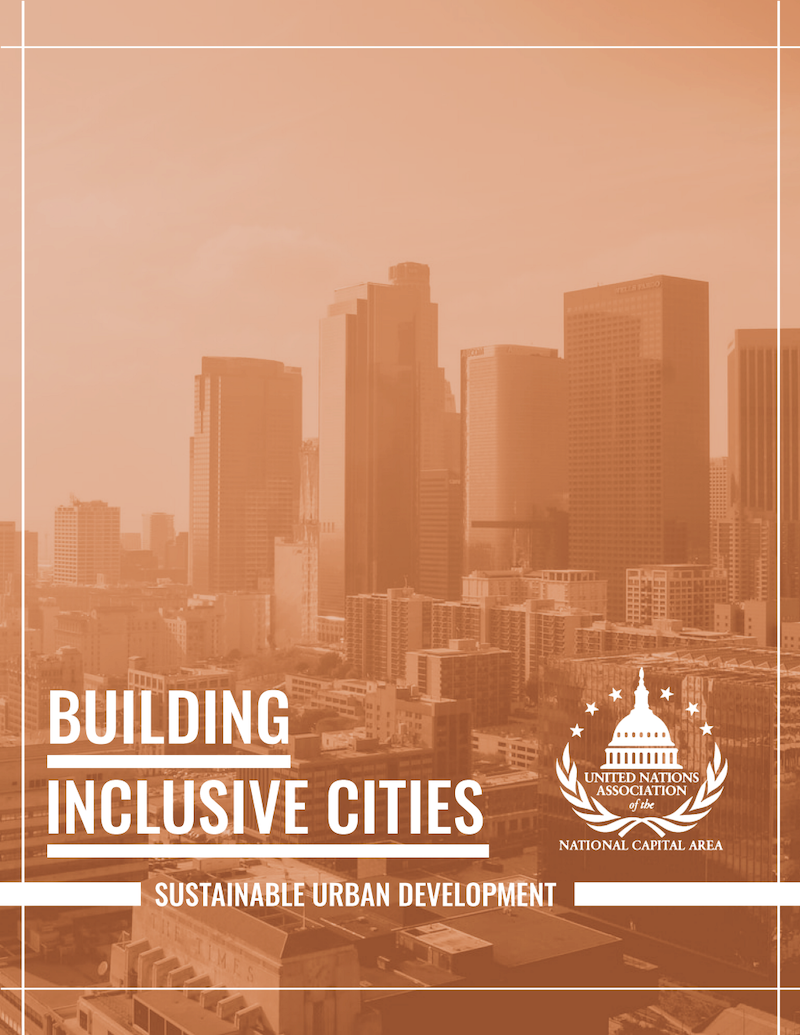Executive Summary
“Civil society and public participation fosters a positive relationship between government and the public by communicating effectively and solving the conflicts in a cooperative manner. In many cases when urban planning decisions are made without consultation, the desired results are not achieved and there is a negative impact on society, due to inefficient allocation and use of resources. Ensuring that wide varieties of opinions are considered assists the decision makers with understanding the interlinkages and nature of problems and potential solutions facing different urban settings.”1–UN Habitat
Cities are expected to host sixty percent of the world’s population by 2030.2 As migration patterns slightly gravitate towards urban living, it is important to consider the existing framework, especially in terms of physical infrastructure, for the cities that populations are flocking towards.
The United States experienced impressive urban growth starting in the mid-1800s, especially along the mid- Atlantic region.3 However, this era preceded any substantial movements towards civil rights and equality by nearly a century. Urban landscapes were not designed with equality in mind; and even with the large expansion of urban communities in the 1920s -1940s, discrimination, like today, remained highly prevalent. The historical context in which cities were established should be assessed when considering the growth of cities in the future, especially as cities prioritize reinvigorating urban infrastructure.
The United Nations Sustainable Development Goal 11 (SDG 11), adopted in 2015, seeks to create cities that are more inclusive, safe, resilient and sustainable.4 The United States, despite its active role in shaping the SDGs, has fallen short in providing the policy development and program funding to invest in sustainable and equitable infrastructure across the country. This policy memo offers a historical overview of urban planning and development within the US and operationalizes SDG 11 as an organizing principle to identify areas of focus for policymakers and members of the community seeking to advance sustainable and equitable urban infrastructure.
The SDGs provide a holistic framework through which the repercussions of racism and classism can be addressed; in context, failing infrastructure can lead to the loss of life. Proper investment and assessment of how cities can move forward can improve public health (SDG 3), reduce inequalities (SDG 10), and mitigate the negative consequences of climate change (SDG 13). The United Nations works with its member states to understand the intersections of the Sustainable Development Goals and advance multi-faceted, cross-sectoral mechanisms for sustainable development. SDG 9 recognizes that access to quality and sustainable infrastructure impacts quality of life and economic opportunity.5 In an urban environment, infrastructure is integral to the landscape, making it difficult to assess infrastructure without also looking at urban planning; as such, this memo primarily focuses its discussion in the context of SDG 11: Sustainable Cities, particularly target 11.3: Enhance inclusive and sustainable urbanization and capacity for participatory, integrated and sustainable human settlement planning and management in all countries.6
Cities present a great amount of opportunity for growth and serve as powerful hubs for the spread of culture and ideas; to ignore the diversity of the population that makes up the city is to allow inequality to fester, therefore creating inequitable investments towards growth. Previous decisions largely influence the slate of options that decision-makers can choose from, a concept known as “path dependency.”7 Policymakers thus need to recognize and address the underlying inequities which have been embedded and perpetuated through to federal, state, and local policy in order to transform the landscape of urban development.
Learn More
Citations
1. UN Habitat. (2018, November). UN Stats on Goal 11. Sustainable Development Goals https://unstats.un.org/sdgs/metadata/files/ Metadata-11-03-02.pdf.
2. United Nations. (2020). Goal 11 Make cities and human settlements inclusive, safe, resilient and sustainable. Department of Economic and Social Affairs. United Nations. https://sdgs.un.org/goals/goal11.
3. Kim, S. (1999, May). Urban Development in the United States, 1690- 1990. NBER Working Paper Series. https://www.nber.org/papers/ w7120.pdf.
4. Sustainable Development Goals. (2018). 2018 Review of SDGs implementation: SDG 11 –Make cities and human settlements inclusive, safe, resilient and sustainable. Sustainable Development Goals: Knowledge Platform. https://sustainabledevelopment.un.org/ content/documents/197282018_background_notes_SDG_11_v3.pdf.
5. Richardson, J.; Mitchell, B.; Franco, J. (2019, May 19). Shifting neighborhoods: Gentrification and cultural displacement in American cities. NCRC. https://ncrc.org/gentrification/.
6. UN Habitat. (2018, March). Metadata on SDGs Indicator 11.3.2 Indicator category: Tier III. UN Habitat for a Better Urban Future. https://unhabitat.org/sites/default/files/2019/02/Metadata-11.3.2_ Edited_20-03-2018.pdf.
7. Koch, J., Eisend, M. & Petermann, A. (2009). Path Dependence in Decision-Making Processes: Exploring the Impact of Complexity under Increasing Returns. Bus Res 2, 67–84. https://doi.org/10.1007/ BF03343529









